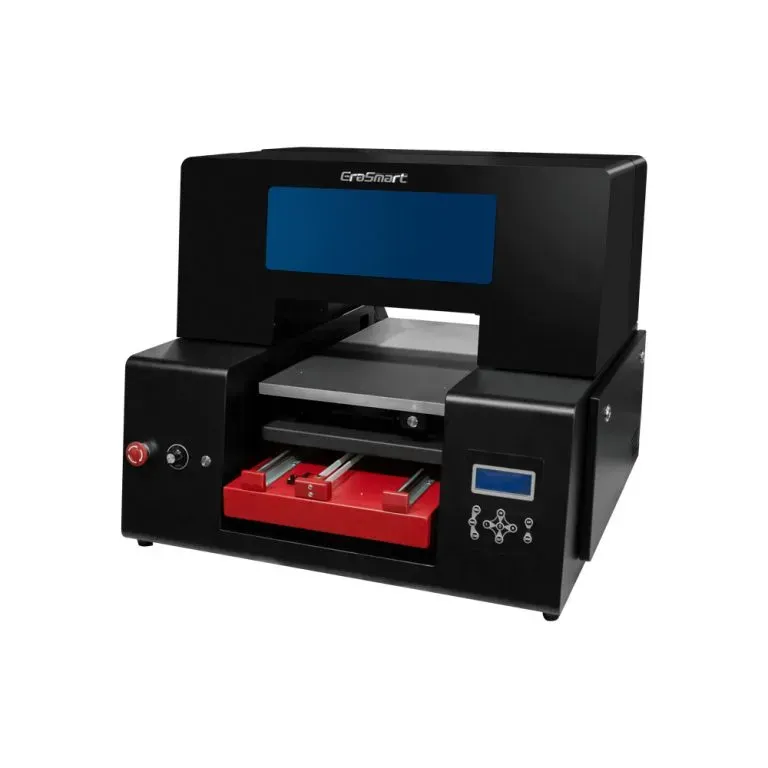UV DTF Technology is revolutionizing the way we think about printing in today’s fast-paced, innovation-driven industry. Utilizing ultraviolet light to cure inks directly onto transfer films, this advanced method boasts impressive versatility and high-quality results, making it suitable for an array of applications from textiles to metal. Among its many benefits, UV DTF technology stands out for its sustainability, playing a critical role in reducing environmental impact through cleaner printing processes. Moreover, with the introduction of affordable UV printers, even small businesses and hobbyists can tap into this cutting-edge technology to create vibrant, durable designs. As Mimaki innovations continue to shape the industry, exploring UV DTF technology can open doors to endless creative possibilities, bridging the gap between art and sustainable production.
Exploring UV Direct-to-Film technology presents a fresh take on traditional printing methods, one that incorporates UV light for ink curing on films that can be transferred onto numerous surfaces. This technique not only enhances the quality of printed materials but also champions sustainable printing technology by minimizing waste and hazardous emissions associated with conventional approaches. Connectively referred to as UV printing, this process provides the unique advantage of allowing rich colors and detailed graphics to be printed efficiently, catering to both industrial and personal needs. With innovations from leaders like Mimaki enhancing the scope of affordable UV printers, users across various backgrounds can easily engage with this technology. The ability to create intricate designs while being mindful of environmental concerns profoundly impacts market trends and consumer preferences.
The Rise of UV DTF Technology in Printing
In recent years, UV Direct-to-Film (DTF) technology has emerged as a significant innovation in the printing sector, gaining traction among both industry professionals and DIY enthusiasts. This advanced method utilizes ultraviolet light to efficiently cure inks printed onto a film, which can then be transferred onto various substrates including textiles, plastics, and metals. As businesses and individuals alike seek high-quality printing solutions, UV DTF technology stands out due to its ability to produce vibrant colors and intricate designs with a level of detail unprecedented in traditional printing methods.
Furthermore, the versatility of UV DTF technology makes it an appealing option across multiple applications—from creating custom apparel to producing promotional materials for businesses. With brands like Mimaki paving the way for novel advancements, the adaptability of UV DTF printing continues to redefine market trends and consumer expectations. As more companies recognize the potential of this technology, we can anticipate continued growth and innovation within the sector.
Frequently Asked Questions
What are the main advantages of UV DTF technology in printing?
UV DTF technology offers numerous advantages, including the ability to print on a wide variety of substrates such as textiles, plastics, and wood. It ensures vibrant colors and high-resolution images, along with reduced environmental impact compared to traditional printing methods by minimizing waste and emissions.
How does UV DTF printing compare to traditional Direct-to-Film printing?
Unlike traditional Direct-to-Film printing, UV DTF printing uses ultraviolet light to cure inks instantly, resulting in durability and vibrant prints. This technology also significantly reduces the use of solvent inks, making it a more eco-friendly option.
What innovations has Mimaki introduced in UV DTF technology?
Mimaki has introduced groundbreaking innovations in UV DTF technology, focusing on efficiency and sustainability. Their latest products are designed to enhance production standards while reducing environmental footprints, making them market leaders in advanced UV printing solutions.
Are affordable UV printers available for personal use?
Yes, affordable UV printers like the Anker eufyMake UV Printer E1 have been launched for personal use. Priced at around $1,699, these printers allow users to create high-quality designs at home, expanding the accessibility of UV printing technology.
How does UV DTF technology contribute to sustainable printing practices?
UV DTF technology significantly contributes to sustainable printing by reducing waste and emissions through its curing process. By eliminating the need for solvent inks, it offers a cleaner alternative, making it a preferred choice in industries focused on environmental responsibility.
What creative applications can be achieved with UV DTF printing technology?
UV DTF printing technology opens up a range of creative applications, including custom apparel, intricate home décor, and personalized gifts. Its versatility allows users to experiment with textures and finishes, making it ideal for both businesses and hobbyists.
| Key Points | Description |
|---|---|
| Versatility | Allows printing on a variety of materials with vibrant colors and detailed textures. |
| Innovation | Companies like Mimaki introduce new UV printing technologies aimed at enhancing efficiency and sustainability. |
| Personal Printing Solutions | Affordable personal UV printers like the eufyMake UV Printer E1 enable individuals to engage creatively with UV DTF technology. |
| Sustainability | Offers an eco-friendly alternative by reducing waste and emissions in the printing process. |
| Creative Opportunities | Advancements allow creators to explore unique projects, enhancing consumer engagement and customization. |
Summary
UV DTF technology represents a significant leap forward in the printing industry, combining innovation and sustainability in a seamless package. This advanced technique harnesses ultraviolet light to cure inks on diverse surfaces, allowing for high-quality prints that maintain their vibrancy over time. As we witness continuous developments, such as the introduction of home-oriented printing solutions, the potential of UV DTF technology is becoming more accessible to everyone—from large industries to individual creatives. The notable reduction in environmental impact through waste minimization further highlights its importance in today’s eco-conscious market. Thus, engaging with UV DTF technology opens up a myriad of creative opportunities, setting the stage for a future where personalized, quality printing is not only possible but also environmentally responsible.



